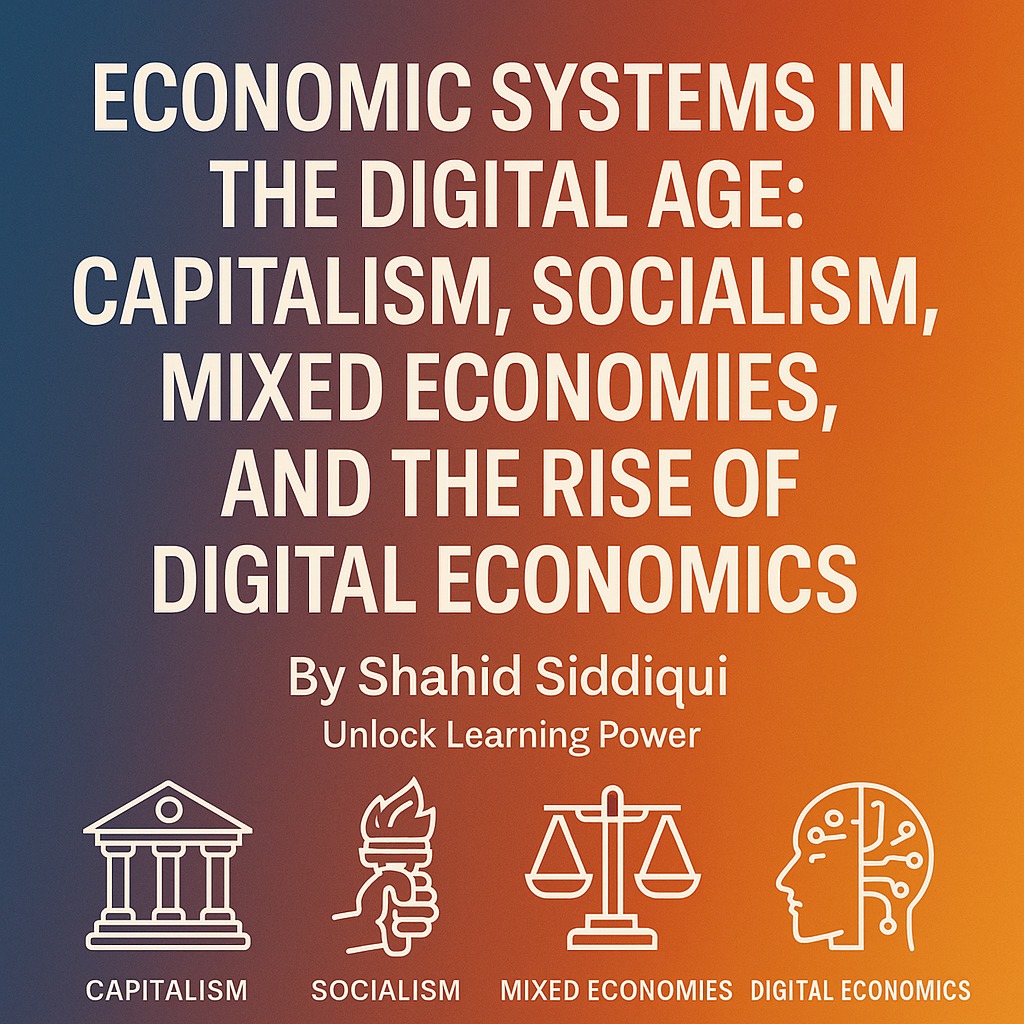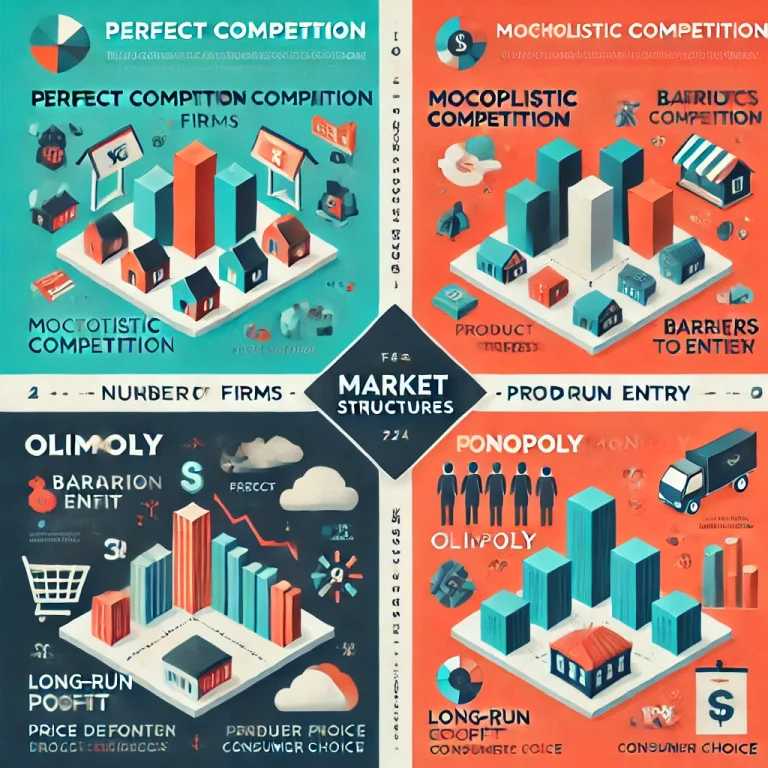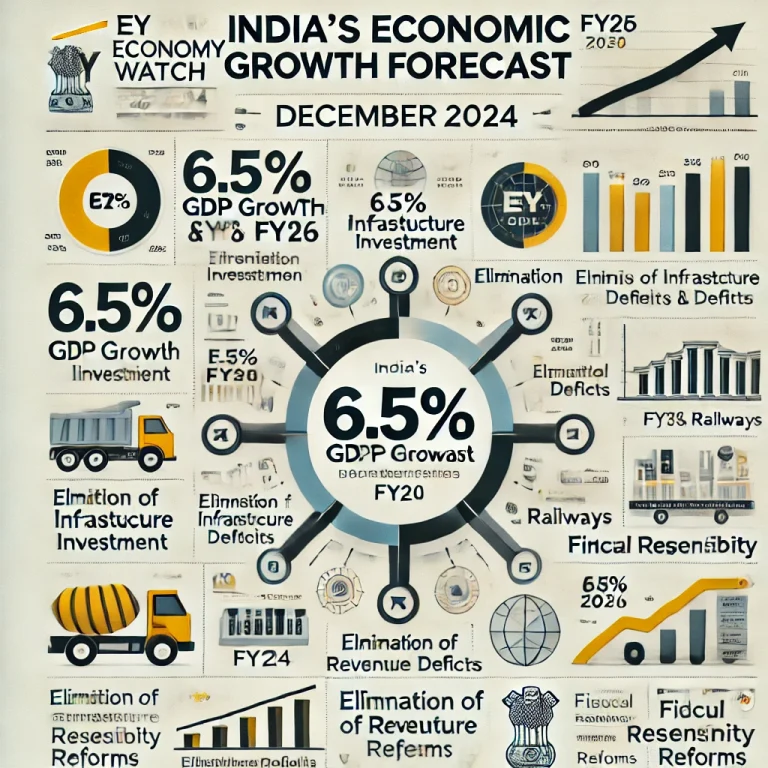Economic Systems in the Digital Age: Capitalism, Socialism, Mixed Economies, and the Rise of Digital Economics
Economic Systems in the Digital Age: Capitalism, Socialism, Mixed Economies, and the Rise of Digital Economics
Every society needs to decide how to manage its limited resources to meet the needs and wants of its people. This is done through an economic system — the way a country organizes the production, distribution, and consumption of goods and services.
At its core, every society faces a fundamental challenge: how to allocate limited resources—such as land, labor, capital, and raw materials—to satisfy the unlimited needs and desires of its people. This universal problem of scarcity versus demand forces nations to develop structured approaches for organizing production, distributing goods and services, and regulating consumption. These structured approaches are known as economic systems, and they serve as the backbone of a nation’s prosperity and stability.
An economic system is more than just policies or markets—it reflects a society’s values, priorities, and vision for the future. Should healthcare be free for all, or should it be driven by private competition? Should essential goods like food and fuel be subsidized, or should prices be determined by supply and demand? These questions are answered differently depending on whether a country follows a capitalist, socialist, mixed, or traditional economy.
For example:
-
In a capitalist system (like the U.S.), businesses operate for profit with minimal government interference.
-
In a socialist system (like Sweden’s), public welfare is prioritized through high taxes and strong social programs.
-
Mixed economies (like India’s) blend market freedom with government intervention to balance growth and equality.
💻 The Rise of Digital Economics
In today’s world, a new economic layer is emerging—Digital Economics. This system doesn’t replace traditional models; it transforms them.
As explored in Digital Economics of Artificial Intelligence (AI) by Shahid Siddiqui, data, algorithms, automation, and platforms are becoming just as important as labor and capital. Countries are not only organizing industries but entire economies around digital infrastructure, cloud computing, and AI capabilities.
📘 Digital Economics of Artificial Intelligence (AI)
Author: Shahid Siddiqui
Explore how data, artificial intelligence, automation, and digital platforms are transforming global economies, education systems, and the future of work. This book blends economic insights with real-life examples for students, policymakers, and tech enthusiasts.
-
In capitalist economies, tech monopolies influence markets more than governments.
-
In socialist models, governments use AI for public service delivery, surveillance, and planning.
-
In mixed economies like India, initiatives like Digital India, Aadhaar, and UPI illustrate how digital systems are deeply embedded in governance, welfare, and commerce.
Digital Economics redefines the core questions of economics:
-
What to produce? Based on data and real-time analytics
-
How to produce? With machines, AI, and smart automation
-
For whom to produce? Personalization based on digital behavior and algorithms
🏛️ 1. Capitalism (पूंजीवाद)
✅ Definition:
Capitalism is an economic system where private individuals or corporations own and control property and businesses, rather than the government. It is based on the principle of profit motive and market competition.
🔑 Key Features:
- Private ownership of businesses and property
- Market economy driven by demand and supply
- Profit is the primary motive
- Minimal government interference
- Competition encourages innovation
🌎 Examples of Capitalist Economies:
- United States
- United Kingdom
- Japan
📈 Advantages:
- Encourages innovation and entrepreneurship
- Wide variety of goods and services
- Efficient resource allocation
- Consumer choice and freedom
📉 Disadvantages:
- Leads to income inequality
- Can result in exploitation of workers
- Market failures may occur
- Less focus on public welfare
🏢 2. Socialism (समाजवाद)
✅ Definition:
Socialism is an economic system where the government or the community owns and controls the means of production. The goal is equality in wealth and social welfare.
🔑 Key Features:
- Government ownership of key industries
- Centralized economic planning
- Focus on welfare and equality
- Reduced income disparity
- Guaranteed basic needs
🌎 Examples of Socialist Economies:
- Cuba
- North Korea
- Venezuela
📈 Advantages:
- Wealth distribution is more equal
- Basic needs like healthcare and education are met
- Security against unemployment and poverty
- Reduced exploitation of labor
📉 Disadvantages:
- Reduced incentives to work hard or innovate
- Government control may lead to inefficiencies
- Limited consumer choices
- High taxation to fund welfare programs
⚖️ 3. Mixed Economy (मिश्रित अर्थव्यवस्था)
✅ Definition:
A mixed economy combines elements of capitalism and socialism. Both private enterprises and the government play a role in economic decision-making.
🔑 Key Features:
- Coexistence of public and private sectors
- Government regulates key areas
- Focus on both economic growth and social justice
- Freedom to do business with government support
- Balanced approach to distribution and development
🌎 Examples of Mixed Economies:
- India
- France
- Sweden
📈 Advantages:
- Balances profit with welfare
- Reduces extreme income inequality
- Provides public services while allowing business freedom
- More economic stability
📉 Disadvantages:
- Risk of bureaucratic delays and corruption
- Excessive government regulation may reduce business efficiency
- High taxes to maintain social programs
💻 4. Digital Economics (डिजिटल अर्थव्यवस्था)
✅ Definition:
Digital Economics is an emerging economic system where data, algorithms, digital platforms, and artificial intelligence play a central role in the production, distribution, and consumption of goods and services. It blends traditional economics with advanced technology to create a new form of value creation in a digital-first world.
🔑 Key Features:
-
Data is the new resource (like land or labor)
-
AI and algorithms drive decision-making and automation
-
Digital platforms (e.g., Amazon, Google, UPI) replace traditional marketplaces
-
Personalization of goods and services using user data
-
Low marginal cost of production for digital goods (e.g., software, streaming)
-
Global access through the internet and cloud infrastructure
🌎 Examples of Digital Economies:
-
India – Aadhaar, UPI, Digital India
-
China – State-led AI and surveillance economy
-
United States – Big Tech-driven innovation (Google, Meta, Amazon)
-
Estonia – Fully digitized public services and e-residency
📈 Advantages:
-
Rapid innovation and productivity growth
-
Low-cost access to services (education, healthcare, finance)
-
Better governance through digital delivery systems
-
Global reach and scalability for businesses
-
Enhanced consumer experience and personalization
📉 Disadvantages:
-
Digital divide and inequality in access
-
Threat to traditional jobs due to automation
-
Data privacy and surveillance concerns
-
Monopoly power of large tech companies
-
Ethical risks from AI-driven decisions
📊 Comparative Table of Economic Systems
| Feature | Capitalism (पूंजीवाद) | Socialism (समाजवाद) | Mixed Economy (मिश्रित अर्थव्यवस्था) | Digital Economics (डिजिटल अर्थव्यवस्था) |
|---|---|---|---|---|
| Ownership of Resources | Private individuals | Government-owned | Both private and government | Data-driven platforms (owned by private/public) |
| Decision Making | Market forces | Central planning | Combination of both | Algorithms and AI-based systems |
| Profit Motive | Strong | Weak or none | Moderate | Data monetization and digital value creation |
| Government Role | Limited | Extensive | Balanced | Regulatory and infrastructural |
| Economic Equality | Low | High | Moderate | Depends on digital access (digital divide) |
| Innovation | High | Low | Medium | Very High (AI, automation, platforms) |
| Consumer Choice | Wide | Limited | Moderate | Personalized and data-driven |


